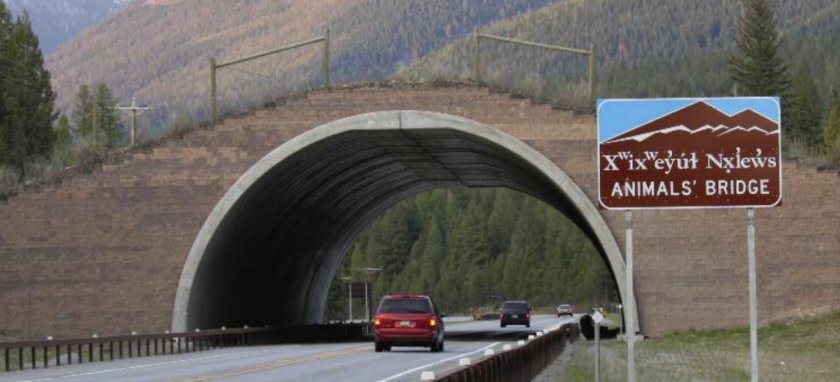
Collisions are, of course, a losing scenario for wildlife as well, and not just because of the immediate toll they take on animals’ lives. In Wyoming, for example, the mule deer population, which supports more than $300 million in annual hunting-related spending in the state, has decreased by 40 percent since 2000, due in large part to habitat fragmentation caused by roads and development. But there is good news: Recent advances in science and policy have given us the tools to help solve this problem, starting with an understanding of how and where wildlife move.
The phenomenon of terrestrial wildlife migration — between higher, cooler summer habitats and lower elevations with more accessible food in winter — is widespread among many species, particularly big game such as elk, pronghorn and deer. Many of these seasonal routes are thousands of years old and in some cases are taught by one generation to the next. Migration, which may cover hundreds or even thousands of miles, is vital to these animals’ survival; it also benefits not only communities that depend on revenue from hunters and wildlife-viewing tourists but also families that rely on big game for food.
Advances in research technology over the past decade have revolutionized experts’ understanding of how wildlife move across landscapes and are now helping to resolve wildlife-vehicle conflicts that are rising due to increased development. One example is GPS collars that are affixed to big game, as well as other mammals and birds, and transmit electronic signals via satellite from some of the most remote regions in the U.S. to researchers throughout the country. This data captures exactly where and when animals move within large landscapes, enabling scientists and engineers to pinpoint where the construction of wildlife crossings — mostly overpasses and underpasses that help animals traverse highways — can most effectively improve motorist safety and facilitate animal migrations. Studies show that a well-placed underpass or overpass can reduce wildlife-vehicle accidents by over 90 percent, providing a high rate of return on federal and state investments in such structures.

(Montana Department of Transportation)
On the federal level, the Infrastructure Investment and Jobs Act of 2021 includes billions of dollars over five years for wildlife and aquatic connectivity programs, along with $350 million for a new wildlife-crossing construction program. Now it’s up to agencies such as the Federal Highway Administration to efficiently implement these programs so that tribes, states and other stakeholders can apply for these critical grants.
These wins should mark just the start of durable solutions to conserve U.S. migration corridors. Federal agencies, including the departments of Agriculture and the Interior, are considering new ways to manage lands that maintain critical ecological linkages. In the face of climate change, sustaining these landscape connections is more important than ever, as it helps provide greater ecosystem resilience for species that migrate between habitats.
Opportunities are growing to integrate science and effective policy to better conserve migration corridors. It’s important that leaders continue working together to craft more innovative technologies, bipartisan policies and funding mechanisms that reconnect wildlife habitats and, in the process, benefit communities, local economies and wildlife health.
Matt Skroch oversees The Pew Charitable Trusts’ work on wildlife migration corridors and crossings.
Governing's opinion columns reflect the views of their authors and not necessarily those of Governing's editors or management.
Related Content











